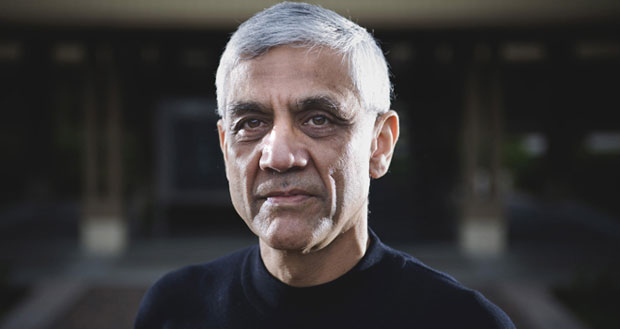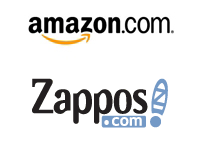 모든 사람들한테는 인생을 살면서 큰 결심을 할 수 있도록 도와준 결정적인 계기들이 있을 것이다. 나한테도 지금까지의 짧은 인생을 살면서 이런 계기가 몇 번 있었는데, 공학박사가 되어서 자동차 엔진 설계를 하면서 대기업에서 안정적인 생활을 하려던 내 목표를 접고 순조롭지만은 않은 이 벤처/high tech 분야로 진로를 바꾼 결정을 하게 된 바로 그 “순간”이 며칠 전 문득 생각나서 여기에 기록을 한다. 벌써 10년 전 일이지만 아직도 그때 생각을 하면 입가에 미소가 절로 생긴다.
모든 사람들한테는 인생을 살면서 큰 결심을 할 수 있도록 도와준 결정적인 계기들이 있을 것이다. 나한테도 지금까지의 짧은 인생을 살면서 이런 계기가 몇 번 있었는데, 공학박사가 되어서 자동차 엔진 설계를 하면서 대기업에서 안정적인 생활을 하려던 내 목표를 접고 순조롭지만은 않은 이 벤처/high tech 분야로 진로를 바꾼 결정을 하게 된 바로 그 “순간”이 며칠 전 문득 생각나서 여기에 기록을 한다. 벌써 10년 전 일이지만 아직도 그때 생각을 하면 입가에 미소가 절로 생긴다.
때는 1999년도 11월 스탠포드 대학 – 1학점짜리 세미나 수업인 “MS&E; 472 – Entrepreneurial Thought Leaders Seminar“를 듣기 위해서 Terman 공대 건물의 Skilling Auditorium에 느긋하게 앉아 있었다. 이 수업은 모든 스탠포드 대학생 (학부/대학원)들이 수강할 수 있는 수업이며, 특별히 시험도 없고 숙제도 없는 세미나 수업으로써 그냥 수업마다 스피커들을 초청하여 강연을 듣고, Q&A;를 한 후에 학교에서 간단하게 마련한 open 다과회를 통해서 socialize를 할 수 있는 내가 가장 좋아하였던 수업 중 하나였다. 그럴 수밖에 없었던 것이, 이 수업에서 초청하는 사람들이 그냥 단순히 교수나 대기업의 과장들이 아니라 마이크로소프트의 Steve Ballmer, Cisco의 John Chambers, DFJ의 Tim Draper, Garage Technology Ventures의 Guy Kawasaki등 high tech 분야에서 상당한 영향력을 미치며 지금의 실리콘 밸리 형성에 지대한 이바지를 한 power player들이기 때문에 이 사람들 얼굴이라도 한번 보려고 많은 학생 및 주위에서 일하는 professional들이 강의실을 금요일마다 (요새는 수요일 4:30~5:30에 하는 거 같다) 가득 채웠다. 이날 무대의 주인공은 KPCB (Kleiner, Perkins, Caufield and Byers: 세계 Top 5 VC 중 하나. Excite.com, Genentech, Netscape, Amazon, EA, Google 등 수많은 유수의 벤처 기업들을 초창기에 발견하여 투자하였다)의 간판스타 중 한 명인 Vinod Khosla였다.
-Vinod Khosla는 1955년 인도 Pune의 평범한 가정 (인도에서의 평범한 가정은 못사는 가정이다) 에서 태어났으며 자라면서 Andy Grove가 동유럽에서 미국으로 망명하여 인텔을 설립한 이야기를 읽으면서 본인도 high tech 분야에서 성공해야겠다는 다짐을 하였다. 인도의 MIT라고 불리는 IIT (Indian Institute of Technology: 인도에 여러 캠퍼스가 있는데 Vinod가 다닌 Delhi 캠퍼스가 가장 들어가기 힘들다)를 졸업하고 미국의 카네기 멜론 대학에서 공학 석사 학위를 받은 후 스탠포드 대학에서 MBA 학위를 받았다. 여기서 코슬라씨는 Sun Microsystems를 같이 창업하게 될 Scott McNealy를 만났고 스탠포드를 졸업한 1980년에 Sun Microsystems를 창업하였다. 그 이후 Kleiner Perkins에 바로 파트너로 조인을 하였고 오랫동안 high tech, 특히 인터넷 관련 회사들을 시작하는 창업자들을 도와서 내가 가장 존경하는 VC로서의 삶을 살다가 몇 년 전에는 스스로 독립하여 Khosla Ventures라는 주로 clean technology 관련 벤처기업들에 투자하는 새로운 VC firm을 설립하여 성공적으로 운영하고 있다.
지금도 스토리는 크게 달라지지 않았지만, 1999년도에 창업을 해서 Kleiner Perkins로 부터 투자 유치를 했고, Vinod Khosla나 John Doerr (또다른 Kleiner Perkins의 스타 VC)를 이사회에 영입하였다면 거의 대박 날 확률이 99.99%였다고 해도 과언은 아니었다. 즉, Vinod는 그 당시에 실리콘 밸리의 마이다스였다고 할까…. 이런 명성을 익히 알고 있었기에 이 전설적인 인도인의 입에서 나오는 말을 한마디도 놓치지 않으려고 열심히 경청하고 있었다. 아니, 이 장소에 앉아 있다는 사실 조차가 나한테는 큰 영광이었고 비싼 등록금을 내고 스탠포드로 온 보람을 느낀 순간들이었다. Vinod는 머리 좋은 공대 학생이 우연한 기회에 실리콘 밸리로 오게 된 이야기와 스탠포드 MBA 프로그램에서 Sun을 같이 창업할 동료들을 만나서 창업하게 된 경험담을 솔직담백하게 우리와 같은 미천한 학생들과 공유하였다. 실은 나는 이때 Sun이 “태양”이 아닌 Stanford University Network라는 사실을 처음으로 알게 되었다.
어떻게 보면 나와 크게 다르지 않은 인생을 산 사람이다. 미국이 아닌 다른 나라에서 평범한 가정에서 태어나서 대학을 졸업하고 (물론 IIT에 갈 머리였으면 나보다 훨씬 훨씬 우수한 사람이다 ㅎㅎ), 미국으로 유학을 왔고…. 뭐 여기까지는 나랑 비슷했지만, 그다음의 인생은 나와 크게 차이 나기 시작하였다. 당시만 해도 생각과 꿈을 많이 꾸었지만 실제로 실행에는 많이 옮기지 못하였던 나와는 다르게 생각을 많이 해서 목표를 정하고 실행을 하여서 성공하였다는 이러한 차이점들에 대해서 그 강의실에서 나는 더욱더 많은 생각을 할 기회가 있었다. Vinod가 이날 사용하였던 ppt 슬라이드 템플릿에는 큰 파도 그림이 그려져 있었고 발표하면서 “the Next Tsunami”라는 말들을 Vinod는 많이 언급하였다 (인도네시아 쓰나미 사건 이후부터는 이 말이 금기시되어 더 이상 Tsunami라는 말을 사용하지는 않는다). 그 내용은 대략 다음과 같다. Entrepreneur들이 추구하는 innovation을 크게 두 가지로 분류할 수 있는데, 기존에 일하던 방식이나 존재하는 제품들을 더 좋고, 더 빠르고, 더 싸게 바꾸려는 innovation이 있고 (e.g. 더 성능이 좋은 CPU를 더 싸게 만들거나, 연비가 좋은 자동차를 만들거나 하는), 이와는 개념적으로 다른 기존에 없는 새로운 비즈니스 모델이나 새로운 제품을 만드는 New New Thing이라는 게 있다 (e.g. 온라인으로 책을 파는 Amazon.com이나 검색으로 돈을 벌 수 있는 모델을 널리 상용화한 Google과 같은). 어떤 게 더 innovative 한 거라고 정의할 수는 없지만, Vinod 본인은 스스로 후자에 더 많은 기대와 돈을 투자한다고 하였다. Sun Microsystems도 여러 개의 워크스테이션을 연결할 수 있는 저렴하고 효율적인 제품과 모델을 구상하는 도중에 창업하게 된 회사이고, 이 강의실에 앉아 있는 스탠포드 학생들이야말로 앞으로 세상을 바꿀 수 있는 아이디어로 – 즉, the Next Tsunami – 인류와 사회에 이바지해야 한다는 내용이었다.
“The Next Tsunami” – 이 말이 오랫동안 가슴에 와 닿았다. 나는 왜 이 먼 미국 땅으로 비싼 등록금을 주고 왔을까? 박사학위를 받아서 안정적인 생활을 하는 게 과연 내가 원하는 삶인가? 솔직히 그동안 한 번도 고민하지 않았던 건 아니지만, 이때 이런 생각들이 내 머리를 팍팍 자극하였고 Malcolm Gladwell이 말하던 소위 tipping point를 내 사고가 이 순간에 넘었던 게 아닐까 싶다. 좋은 학교에서 박사 학위 받아서 대기업에 engineer로써 안정된 직장생활을 하는 거 보다는 분명히 뭔가 더 의미 있게 인생을 살 방법이 있을 것이고, 그렇기 때문에 미국까지 와서 유학을 하는 게 아닐까 하는 생각을 분명히 Vinod Khosla는 Stanford를 다니면서 가졌을 것이다. 저 인도 아저씨도 했는데, 나라고 못 하랴? (물론, 이게 생각보다 쉽지 않다는 걸 요새도 매일매일 팍팍 깨닫고 있다 하하). 45분이라는 짧은 시간이었지만, 강연을 들으면서 점점 사고의 전환이 내 머릿속에서 일어나고 있었으며 이상한 자신감이 가슴속에서 불쑥불쑥 생기기 시작했다. 그리고 왠지 기분이 점점 좋아지고 있었으며, 마치 안개가 자욱하였던 눈앞이 clear 해지는걸 느낄 수 있었다. 한 달 뒤에 나는 원래 전공이었던 기계공학을 그만두고 경영과학으로 전과를 하였으며, 원래 계획하였던 5년 박사 과정을 과감하게 접고 1년 3개월 만에 후다닥 석사 학위를 받은 후에 실리콘 밸리의 Valicert라는 벤처기업에서 첫 career를 시작하였다 (몹시 나쁜 choice였다!). 물론, 졸업할 당시는 경기가 좋아서 Cisco나 Sun과 같은 대기업으로부터 offer를 받기도 하였지만 왠지 작은 회사에서 뭔가를 성취해 보고 싶어서 일부러 남들이 잘 모르는, 그렇지만 가능성이 나름대로 커 보이는 벤처기업으로 진로를 바꾼 거다. Vinod는 다음과 같은 말로 speech를 마무리했다. “돈보다 뭔가 큰 cause를 위해서 창업을 하는 사람들이 있고, 단순히 돈을 벌기 위해서 창업을 하는 사람들도 있습니다. 어떤 이유던 간에 안정적인 삶을 포기하고 창업을 하는 그 정신은 숭고하고 위대하며, 돈을 위해서 창업을 한 사람들도 비즈니스를 하면서 점점 뭔가 더 큰 목적을 위해서 매일 매일 침대에서 벌떡 일어나서 일터로 향하는 서서히 바뀌고 있는 자신을 발견할 수 있을 겁니다. 스탠포드라는 세계 최고의 학교에서 공부할 기회를 가지고 있는 여러분들은 선택된 소수의 사람입니다. 그 기회를 헛되게 하지 마세요. You will find yourselves creating the NEXT TSUNAMI.”
우리는 인생에 있어서 role model 이야기를 많이 한다. 나도 그전에는 마음속에 많은 role model들을 간직하고 있었지만, Vinod Khosla는 정말 내가 중대한 결단을 가능케 한 그 장본인이었으며, 요즘같이 힘든 시기에도 1999년 Skilling Auditorium 앞줄에 앉아서 열심히 강연을 들으면서 감동하던 내 모습을 떠올리면 마음과 정신이 정화되어서 다시 그때의 초심으로 돌아갈 수 있게 되는 거 같다. 얼마 전에 안철수 박사가 무릎팍도사에 출연해서 아주 좋은 이야기를 많이 하셨다고 하는데, Vinod가 그날 나를 비롯한 많은 학생을 감동하게 한 거와 마찬가지로 수만 명의 대한민국 젊은이들의 가슴에 큰 희망을 심어주셨을 거라고 나는 굳게 믿고 있다. 아직 나는 유감스럽게도 Vinod만큼 성공을 하지는 못하였고, 앞으로도 Vinod 만큼 성공을 할 수 있을지도 의문이지만, 현재 내 인생을 즐기면서 내가 하고 싶은 일을 하고 있다는 거는 확실히 장담할 수 있다. 만약 그때 이 결정을 하지 못하고 그냥 안정적인 직장만을 추구하였다면 어떻게 살고 있을까…. 아마 한정된 시각으로 세상을 바라보면서 잘살고 있을 거 같지만, 그게 내가 바라는 인생은 아니었을 거 같다.
글을 마치면서…. 갑자기 99년 회상을 왜 했냐 하면 최근에 Vinod가 에탄올을 대체 에너지로 활용할 수 있는 기술과 벤처 기업들에 대해서 인터뷰한 기사와 동영상들을 봤는데, 10년이 지난 현시점에서도 여전히 좋은 회사, 좋은 기술, 좋은 사람들을 찾아다니면서 Next Tsunami를 준비하고 있는 이 사람이야말로 진정한 role model이 뭔지를 몸으로 보여주는 사람인 거 같아서 몇 자 적어봤다.
<이미지 출처 = Famous-Entrepreneurs.com>
 7월 22일 Amazon이 Zappos를 1조원 이상에 인수하기로 하였다는 소식이 tech 분야를 강타하였다. Zappos.com은 어떤 회사인가? Zappos라는 회사 이름은 ‘신발’이라는 의미의 스페인어 zapatos에서 유래하였으며, 말 그대로 신발을 인터넷으로 판매하는 전자상거래 사이트이다. 1999년에 라스베가스에서 회사는 설립되었으며, 창업 10년도 되지 않은 2008년도 매출이 자그마치 1조3천억원이나 되는 최대 규모의 온라인 신발 판매 사이트이다. 물론, 창업 이후로는 신발 뿐만이 아니라 핸드백, 지갑, 썬글라스, 시계 등의 accessory 분야로 사업을 확장하였으며, 최근에는 Zappos Couture라는 고급 신발 라인을 launch 하기도 하였다.
7월 22일 Amazon이 Zappos를 1조원 이상에 인수하기로 하였다는 소식이 tech 분야를 강타하였다. Zappos.com은 어떤 회사인가? Zappos라는 회사 이름은 ‘신발’이라는 의미의 스페인어 zapatos에서 유래하였으며, 말 그대로 신발을 인터넷으로 판매하는 전자상거래 사이트이다. 1999년에 라스베가스에서 회사는 설립되었으며, 창업 10년도 되지 않은 2008년도 매출이 자그마치 1조3천억원이나 되는 최대 규모의 온라인 신발 판매 사이트이다. 물론, 창업 이후로는 신발 뿐만이 아니라 핸드백, 지갑, 썬글라스, 시계 등의 accessory 분야로 사업을 확장하였으며, 최근에는 Zappos Couture라는 고급 신발 라인을 launch 하기도 하였다.